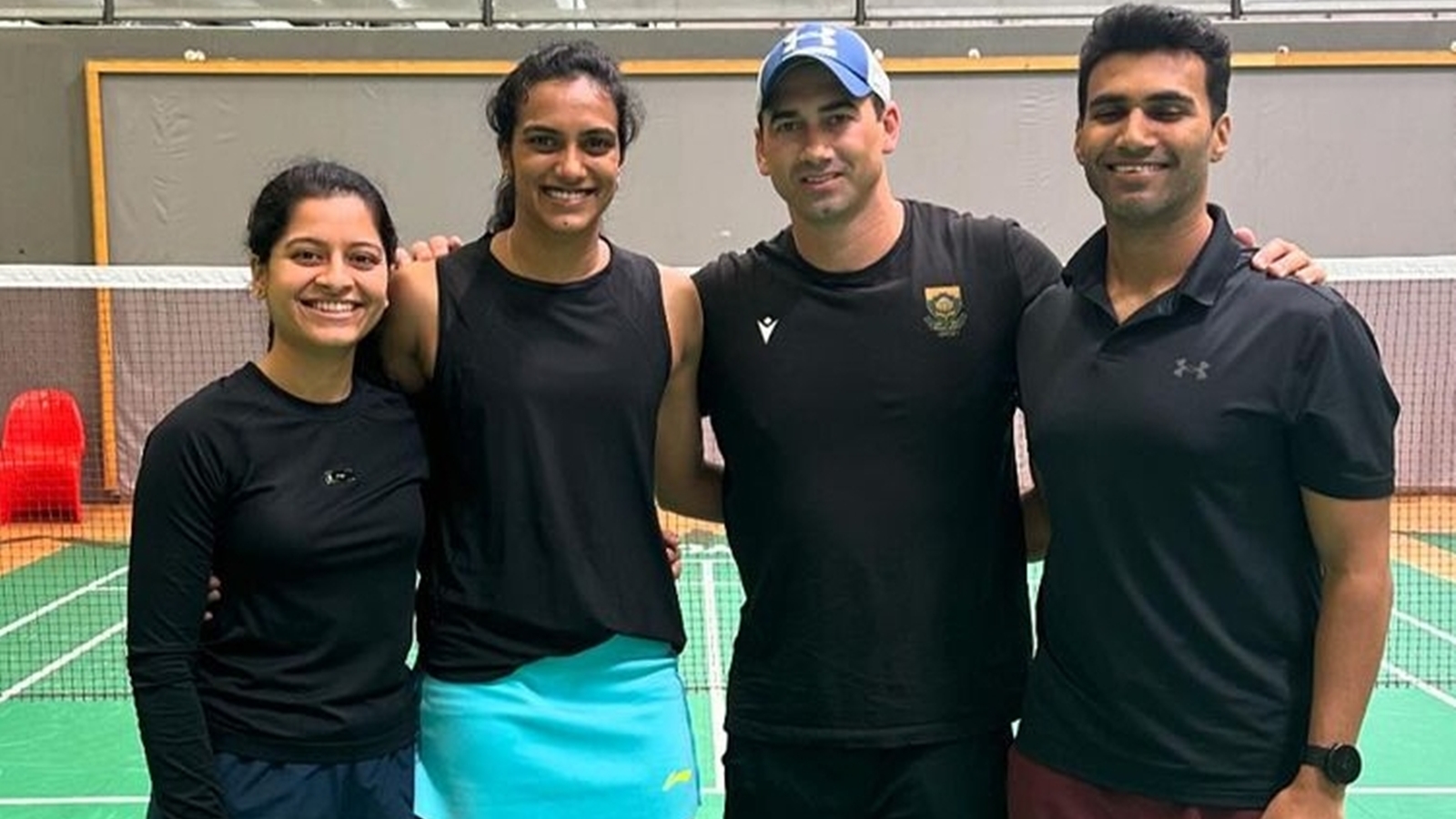IN LESS than three weeks, when India’s athletes touch down in Paris for the Olympic Games, they will be travelling from different corners of the world — Japan to Germany, US to Turkey.
For the Indian sports ecosystem, these journeys may well be the signoff on three years of preparations for the mega world event — on a scale never seen before, documents accessed by The Indian Express under the RTI Act show.
They range from living quarters in Germany for a badminton entourage to special feed for horses in the equestrian event, according to the minutes of meetings held almost every Thursday afternoon over the past three years by India’s Mission Olympic Cell (MOC).
Consider this:
* A team of 12 specialists helping badminton ace P V Sindhu in her quest for a third Olympic medal at a boot camp in the German industrial town of Saarbrucken.
* A table of the same make that will be used at the Olympics imported from China for table tennis star Manika Batra to get used to its pace, spin and bounce.
* Special horse feed for equestrian prospect Anush Agarwalla’s dark chestnut gelding, along with equipment including saddle pads, boots and blankets.
* iPad and high-speed cameras for weightlifter Mirabai Chanu.
The MOC includes former athletes, Indian and foreign coaches, high-performance directors and officials from the federations and government. And its meetings are significant because even though such preparation is normal for major sporting nations like the USA and China, they show that Indian sport has finally caught up with global standards — at least in scale.
Overall, officials say, Rs 72 crore were spent under the Target Olympic Podium Scheme (TOPS) during the three-year Olympic cycle from Tokyo in Covid-hit 2021 to Paris — almost double that of Rio 2016. And, according to the RTI documents, the MOC approved 403 proposals from about 100 Paris hopefuls under TOPS, while rejecting 50, between May 2023 and May 2024.
The approved proposals covered a range of equipment, facilities and customised training plans: shoes to sunglasses, high-end sports watches to high-speed cameras, traditional equipment to cutting-edge technologies, and clothes, food and supplements.
Officials acknowledge that expenditure isn’t proportional to the final medal count. Yet, if the projections made by federations of five sports central to India’s hopes come true (see box), the country could breach the double-digit mark for the first time in the French capital. At the previous Tokyo Olympics, India won seven medals, including a first-ever gold in track and field from Neeraj Chopra in javelin. It was India’s best performance at the Olympics.
This time, documents show, the Athletics Federation of India has estimated that the sport would contribute two medals to the overall tally. Boxing has predicted three, badminton has raised the possibility of “two-three” medals while archery and weightlifting have put their calculations at one medal each.
In Tokyo, apart from Chopra’s gold in these five sports, boxing, badminton and weightlifting had contributed one medal each while archery drew a blank. For Paris, the assessments of other major sports like hockey, wrestling and shooting, were not listed in the documents.
For Paris, an illustrative example of the level of preparation is the case of Sindhu.
The two-time Olympic medallist has been camping in Saarbrucken since June 15. Accompanying her is a mentor (Prakash Padukone), a chief coach, two assistant coaches, two physios, one strength and conditioning expert and five sparring partners.
Sindhu will be stationed there until July 20, when she will leave for Paris. To make sure she remains fresh, her room has been fitted with a “bigger TV”, and a lounge facility has been created to relax, conduct meetings and be used as storage space.
These expenses were split three ways. While the government and Sindhu’s backers, Olympic Gold Quest, shouldered a majority of the cost, the athlete herself partly contributed.
Sindhu also has an infrared sauna cabin to aid her recovery post-training. But then, she isn’t the only one to go big on recovery tools. Fellow shuttler H S Prannoy was provided funds to undergo Hyperbaric Oxygen therapy and Red Light therapy to heal his body after punishing workouts. Funds were allotted for table tennis flag-bearer Sharath Kamal to put his body through a slew of tests, including blood, genetic and bone density scans.
Two-time world champion boxer Nikhat Zareen, meanwhile, got a laser unit. “Boxing is such a sport where minor injuries happen after every sparring session. It can be a small area where the muscle is tight or a manageable injury. The laser helps in healing that area,” she told The Indian Express.
Officials point out that all of this is in stark contrast to the situation barely a decade ago.
In 2016, it was only after an inconsolable Dutee Chand burst into tears in public, two weeks before the Rio Olympics, that the country’s sports bureaucracy swung into action, wire-transferring her money to buy running shoes.
For the 2012 Olympics, bronze medallist Mary Kom had to rely largely on her private sponsors to hire a foreign coach and train abroad leading up to the Games.
And, shooter Abhinav Bindra narrated in his autobiography how “completely disillusioned” he was when he went to meet the Sports Ministry officials in 2006 to request “funds for coaching, for equipment, for training”.




